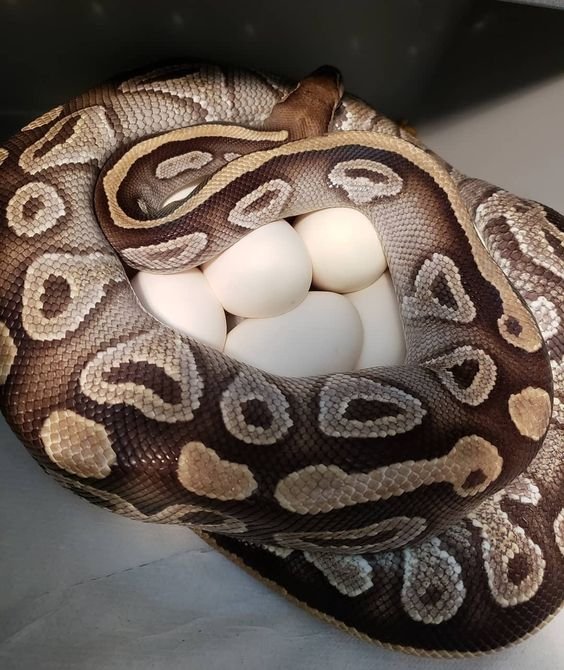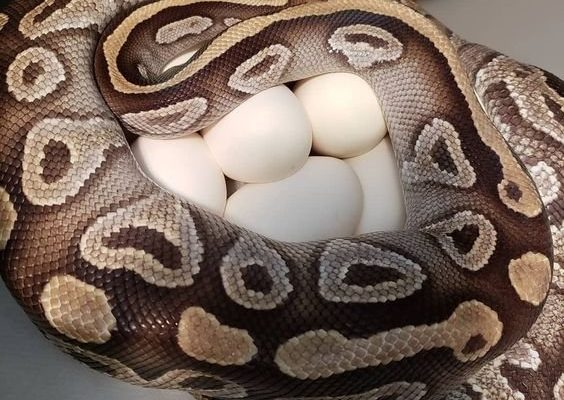
Now, you might think breeding ball pythons is just for experienced keepers, but that’s not entirely true. With a bit of preparation and knowledge, even newcomers can jump in. This guide will walk you through everything you need to know about breeding ball pythons, making it as easy as pie—well, maybe with a little more effort!
Understanding Ball Pythons
Before diving into breeding, let’s get to know the ball python itself. Ball pythons, or *Python regius*, are small to medium-sized constrictors, usually ranging from 3 to 5 feet long. They’re called “ball” pythons because they often curl up into a tight ball when stressed—quite an adorable defense mechanism! Their temperament is generally calm, making them popular pets.
You might be tempted to think that all ball pythons are the same, but they come in various morphs, which are different colorations and patterns. Each morph has its own charm, and understanding these differences is crucial if you’re considering breeding. You might choose to breed common morphs like the pastel or spider, or you might be interested in more exotic ones. This variety is part of what makes ball pythons so fascinating to breed.
Setting Up the Right Environment
Creating a comfortable breeding environment is like setting the stage for a play. You want everything just right to ensure the stars (your pythons) perform their best! For breeding, you’ll need a spacious, secure enclosure. A good rule of thumb is to have at least a 40-gallon tank for a pair of adult ball pythons.
In terms of temperature and humidity, aim for a warm side of 88-92°F and a cooler side around 75-80°F. The humidity level should be around 50% to 60%. Using a reliable thermometer and hygrometer can help you monitor these conditions. Make sure to include hiding spots like logs or plants, which help your snakes feel safe and secure.
Honestly, keeping the environment stable can be a challenge, especially during the breeding season when things might get a bit heated—literally! Regularly checking your setup can prevent many common issues that may arise.
Nutritional Needs for Breeding
When it comes to breeding ball pythons, nutrition is key. Think of it like fueling your car: if you want to drive far, you need the right kind of gas. For optimal health, feed your adult pythons a diet of appropriately sized rodents, such as mice or rats, based on their size and age. Generally, adult ball pythons should be fed once every 1 to 2 weeks.
During the breeding season, it’s important to ensure your snakes have a varied diet. This might include offering larger prey items or adding supplements to their meals to boost their health. If your female is preparing to lay eggs, her diet should be rich in protein and nutrients. Good nutrition helps increase egg viability and overall health, so don’t skimp on this step!
If you’re wondering how many meals to provide during the breeding season, it’s typically enough to maintain their body condition without overfeeding. Always keep a close eye on their weight and adjust accordingly.
Understanding the Breeding Process
You might be curious about how the breeding process actually works. Let me break it down for you! The first step is to introduce your male to the female. It’s best to wait until the female has reached maturity—usually around 2 to 3 years old. Mating can happen in late winter to early spring, so timing is pretty crucial.
Once introduced, watch for signs that they’re interested in each other. You may see them tangled up or engaging in courtship behaviors. It can take several hours for mating to occur, and this might happen multiple times over a few weeks. After successful mating, you’ll know the female is gravid if she shows signs like increased appetite or changes in behavior.
Once the female lays her eggs—typically between 4 to 10 eggs—it’s time to set up an incubator. The temperature should be around 88-90°F, and humidity should be kept around 80%. Incubation usually lasts about 60 to 65 days. It’s a waiting game, but the reward is worth it!
Incubation and Hatching
When it comes to incubating ball python eggs, think of it as waiting for a cake to bake. You have to ensure the right conditions for the eggs to develop properly. Using a reliable incubator with accurate temperature and humidity controls is essential. Many breeders use a substrate like vermiculite or perlite to provide moisture.
Checking the eggs weekly can help you monitor their development and moisture levels. You might be surprised to see how they change over time! After a couple of months, you’ll start to see the first signs of hatchlings ready to emerge.
When the time comes, handling the newly hatched snakes requires a gentle touch. They’ll need some time to absorb their yolk before being offered their first meal. Typically, baby ball pythons can start eating small mice after a week or so. Observing this moment is incredibly rewarding and makes all the hard work worth it!
Common Challenges When Breeding
Breeding ball pythons isn’t without its hurdles. You might find yourself facing challenges, such as eggs that don’t hatch or snakes that refuse to breed. Here’s the thing: being prepared can help you tackle these issues head-on.
For instance, if your female isn’t laying eggs, it might be due to stress or improper conditions. Ensuring she feels safe and comfortable can significantly improve the chances of a successful breeding season. If you do experience egg-laying issues, consulting experienced breeders or a veterinarian can provide insights tailored to your situation.
Another challenge can be the unexpected health issues with the hatchlings. Keeping a close eye on their health and growth is crucial. If you notice anything off, like lack of appetite or unusual behaviors, don’t hesitate to seek help from a reptile vet.
Breeding ball pythons can be an incredibly rewarding experience. It’s like nurturing a passion and watching it grow, from the first pairing to the moment those adorable hatchlings make their entrance into the world. With careful planning and the right knowledge, you can enjoy every aspect of this journey.
As you embark on this adventure, remember that patience and attention to detail are key. Each step, from setting up the right environment to ensuring proper nutrition, plays a vital role in the success of your breeding program. So grab your notebook, dive into research, and get ready to create your own little ball python family!

